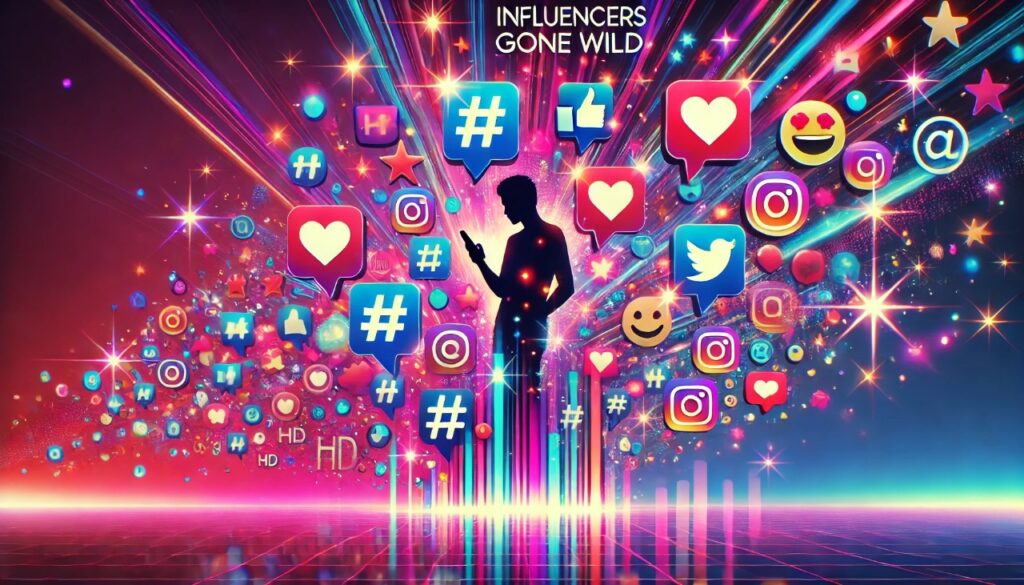The world of social media is a dynamic and sometimes chaotic landscape where influencers wield incredible power to shape opinions, spark trends, and drive consumer behavior. But what happens when these influencers go wild — crossing lines, making mistakes, or letting fame get to their heads? Welcome to the fascinating (and sometimes cringeworthy) world of “influencers gonewild.”
In this blog post, we’ll dive into some of the wildest influencer scandals, explore why these moments happen, and examine the consequences for both the influencers and their followers. Along the way, we’ll also touch on lessons for brands and individuals navigating the ever-evolving social media landscape. So, buckle up for an eye-opening journey into the good, the bad, and the downright bizarre!
The Rise of Influencer Culture
What Makes Influencers So Influential?
Influencers have become modern-day celebrities, with their power stemming from relatability and direct access to their followers. Unlike traditional celebrities, influencers often start as “regular people,” building a loyal audience by sharing authentic snippets of their lives. They inspire trust, and their recommendations can feel like advice from a friend.
From beauty gurus to fitness coaches, influencers cover every niche imaginable. But with great power comes great responsibility — and not everyone handles it well.
The Pressure to Perform
Behind the picture-perfect posts lies immense pressure to maintain relevance, grow followings, and secure lucrative brand deals. This pressure can sometimes lead influencers to take shortcuts, make poor decisions, or push boundaries in ways that backfire spectacularly.
Iconic “Influencers Gonewild” Moments
1. Fyre Festival: A Marketing Mirage
When Instagram models and influencers like Bella Hadid and Kendall Jenner promoted the now-infamous Fyre Festival, they painted a picture of a luxurious, once-in-a-lifetime experience. What attendees got instead was a disastrous event featuring soggy tents, cheese sandwiches, and chaos.
Why It Went Wild: The influencers involved faced backlash for promoting an event they hadn’t verified. It highlighted the importance of ethical responsibility when endorsing products or events.
2. Logan Paul’s Japan Scandal
YouTube star Logan Paul faced global outrage after posting a video from Japan’s Aokigahara Forest, a site known for its tragic association with suicides. The video was widely condemned for being insensitive and exploitative.
The Fallout: Logan lost sponsorships, faced public shaming, and had to issue multiple apologies. This moment served as a wake-up call about the importance of empathy and boundaries.
3. “Instagram vs. Reality”
Countless influencers have been caught altering their photos to unrealistic extremes. Whether it’s overly edited bodies or fake luxury lifestyles, the veil of authenticity is sometimes lifted in embarrassing ways.
Why It Matters: These moments erode trust and spark debates about the harmful effects of unattainable beauty standards.
Why Do Influencers Go Wild?
1. The Pursuit of Virality
In the quest to “go viral,” influencers may take risks that don’t pay off. Shock value can generate clicks, but it’s a double-edged sword. Crossing ethical lines often leads to backlash rather than applause.
2. Fame’s Double-Edged Sword
Sudden fame can be overwhelming. Many influencers aren’t equipped to handle the scrutiny and expectations that come with their newfound celebrity status.
3. Lack of Oversight
Unlike traditional media figures, influencers often operate independently, without PR teams or managers to guide them. This autonomy can lead to unfiltered (and unwise) decisions.
Lessons for Brands
1. Do Your Homework
Brands should vet influencers carefully before partnering with them. Past controversies or questionable behavior can reflect poorly on a brand if they come to light later.
2. Emphasize Authenticity
Audiences crave realness. Influencers who prioritize transparency and honesty tend to have more loyal followings — and are less likely to go wild.
3. Have a Crisis Plan
When things go wrong (and they sometimes do), brands need a clear strategy for addressing the fallout. Staying silent can often make matters worse.
How to Spot Red Flags
For followers, it’s important to approach influencer content with a critical eye. Here are some red flags to watch for:
- Over-Promising: Be wary of influencers promoting products or events that seem too good to be true.
- Inconsistency: Frequent changes in values or endorsements can indicate inauthenticity.
- Unethical Behavior: Support influencers who align with your values and call out those who cross ethical boundaries.
The Silver Lining: Redemption Stories
Not all “gone wild” moments end in disaster. Many influencers learn from their mistakes, make amends, and rebuild their reputations. For example, Logan Paul shifted his content to focus on mental health awareness and philanthropy after his scandal. These redemption arcs show that growth is possible, even in the public eye.
Conclusion: A Cautionary Tale for the Digital Age
The phenomenon of “influencers gonewild” is a stark reminder of the power and pitfalls of social media fame. While these moments can be entertaining (and sometimes infuriating), they also offer valuable lessons about authenticity, accountability, and the responsibility that comes with influence.
For influencers, the takeaway is clear: Think before you post. For brands, it’s a call to choose partners wisely. And for followers, it’s a reminder to look beyond the glossy images and approach online content with a critical mind.
As social media continues to evolve, one thing is certain: The wild world of influencers will keep us talking — for better or worse.
